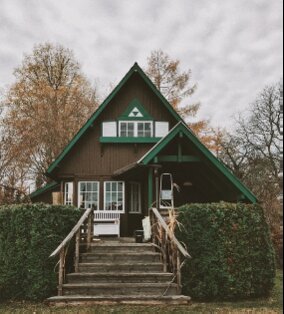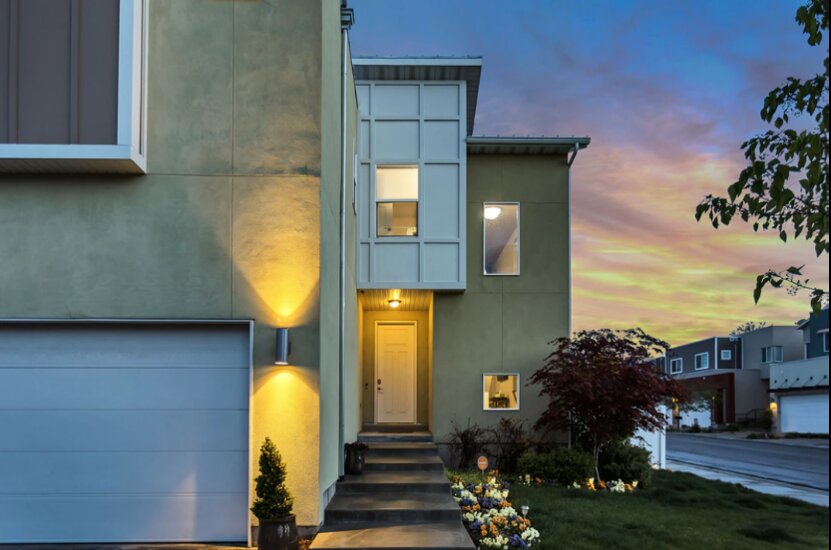
In this post, you’ll learn how to create an eye catching rental advert that includes everything your tenant needs to know. We’re also covering how to make the most of photos to advertise your property.
How to Write a Good Rental Advert
When writing a rental ad, the best thing is to consider what will appeal to your target tenant. These days we are all terrible at reading anything properly. You’ll find the majority of people will either scan read your rental listing to confirm it has the key features they’re looking for, or they’ll only read a small part of it and then give up on the rest.
You need to use attention grabbing language in your listing, bullet points to make scan reading easier, and you’ll need to know what will appeal most to your target tenant so you can include this as close to the top of your listing as possible.
Craft a Good Headline for Your Listing
Depending on where you advertise your property, the headline may or may not be the first thing a tenant sees when they are searching for a new home. On the larger sites, photos take precedence, but on Facebook and listing websites like Gumtree, you need to craft a good headline to catch a tenant’s eye.
Headlines should be catchy. Try to capture the reader’s attention (in a good way). To do this, decide what the main selling points of your property are and distil them into a single headline. See below for examples:
- Spacious 3-bed semi in popular school catchment area – £1150/pcm
- NO DEPOSIT house-share close to university – £88/pw
- Newly renovated terrace – ALL BILLS INCLUDED – £650/pcm
- CHEAP one-bed flat close to station – £300/pcm
All of these headlines offer things a tenant might be looking for. Families want homes near good schools, students want to live near campus, and young professionals want a low-cost home near public transport links.
Write down a list of unique selling points. Pick the most desirable and use them in your headline. Avoid adding too many extra words. Keep it short but eye-catching.
Don’t forget to include the monthly or weekly rental costs, and whether it includes bills. This is usually the main criteria tenants use to sort through property listings.
Write a Good Property Description for a Rental Advert
Photos and a headline grab the viewer’s attention, but the property’s description is just as important. This is where you detail everything the property offers tenants, including location, number of bedrooms, bathrooms, and whether it has a garden or driveway.
Tenants don’t have a lot of time and there may be several property listings for them to view. In most cases, the photos and headline will draw them in and then they will glance over the description to see if the property meets their needs. If there are enough bedrooms and it sounds OK, they will read the listing in more detail.
Bullet points tell a tenant what main features a property has at a glance and make it easy for them to scan the listing. You can expand on these in the main description.
For example:
- Four double bedrooms
- En-suite shower in master bedroom
- Downstairs toilet
- Large garden
- Gas central heating
- Recently redecorated with new flooring throughout
In the body of the listing, go into more detail. Mention every possible selling point, such as fitted wardrobes, integral appliances, new boilers, double-glazing, etc. A property listing is where you sell a rental home to a tenant. The better it sounds, the more likely they are to want to organise a viewing.
In your listing, you should also include details of local amenities that will appeal to your tenant. For instance, if you want to rent to professionals mention what kind of transport links are close by and how long it takes to walk to the train or bus station, mention close by shops and supermarkets and how long it takes to walk there. Mention what job prospects are like in the area etc.
If prospective tenants call and ask you questions about the property that aren’t covered in your listing, update your listing to answer the question they’ve asked. In the long run this will provide more information to prospective tenants and reduce the number of questions you’re asked ahead of a tenant booking a viewing.
Use Professional Photos in Property Adverts
Wherever you decide to advertise your property, it’s imperative that you use good photographs. The photos you take will make or break your listing. The property should be clean and tidy when you take pictures. If you’re letting a furnished property you should include the furniture in the pictures. If you’re letting unfurnished, try to take photos of the property while it’s empty.
Choose a nice sunny day to take photos, so the property is presented in the most flattering way. If you want to emphasise any special features, such as a log burner or open fire, take photos at the most appropriate time (i.e. in the evening when the fire looks cosy and inviting).
If you aren’t good at taking photos and all your pictures make the property look small or dark, invest in a professional photographer. The photos are one of the most important ways to attract tenants to your property.
Once you’ve got a good set of photos you can use the same ones again and again provided nothing significant changes about your properties between tenants.
Tips for Taking Good Property Photos
Use a good camera. Smartphones these days do tend to have better and better cameras but often they don’t have the complexity of an SLR or digital camera. Being able to change the lens, the aperture and the exposure among other things is the key to taking great photos. If you’ve got a lot of properties, it may be worth investing in a digital camera. If you only have a few properties, consider hiring an expert or borrowing a camera if you know someone who has one.
Good property photos are always staged. The property is always prepared in a specific way to make it look good in a photograph. This involves removing any clutter from the room, reducing the number of personal items and anything that makes the room look messy. Ideally you want the property to look like a show home: clean, tidy, simple, spacious and neutral.
You’ll want the property to look light and airy so make sure the light is with you. Turn on lights in the room you’re photographing, open curtains or blinds and use an external flash if the one on the camera is still making your room look dark.
Try to capture as much of each room in the shot as possible. The most common way to do this is to stand in one corner of the room which will allow you to snap the other three corners at once.
Aim to take shots at eye level, but if there’s a lot of low line furniture you may want to take the pictures from a lower level. Experiment with the height of your photos until you snap one you are happy with.
Make sure you capture images of the outside of the property too, try not to include too much of the neighbouring properties so that prospective tenants can see exactly which property they are looking at. Take outside photos at a good time of day, preferably when it isn’t raining or too overcast. Avoid taking photos while the sun is directly overhead, usually around midday as this tends to create a lot of shadows which you’ll want to avoid.

Most people think that taking photos while the sun is out is the best way forward with outside photos. While it’s great to use a sunny or slightly overcast day to pick out the details of your property, don’t overlook the idea of taking an external photo at dusk.
As the sun is going down, turn on the lights inside the property and snap a photo from the outside. Bonus points if you capture a pink sky behind your property! This makes the home look cosy and welcoming.

It’s important that you make the property look clean, tidy and as neutral but welcoming as possible. Above all you need to make sure that the property is not misrepresented in your photographs. While the photos will pull in prospective tenants, if they arrive for a viewing and find the property looks nothing like its photos it’s going to be a waste of everyone’s time.
There you have it, that’s all of our top tips on how to write the perfect property advert and attract the most suitable tenants. Now the power is in your hands!



